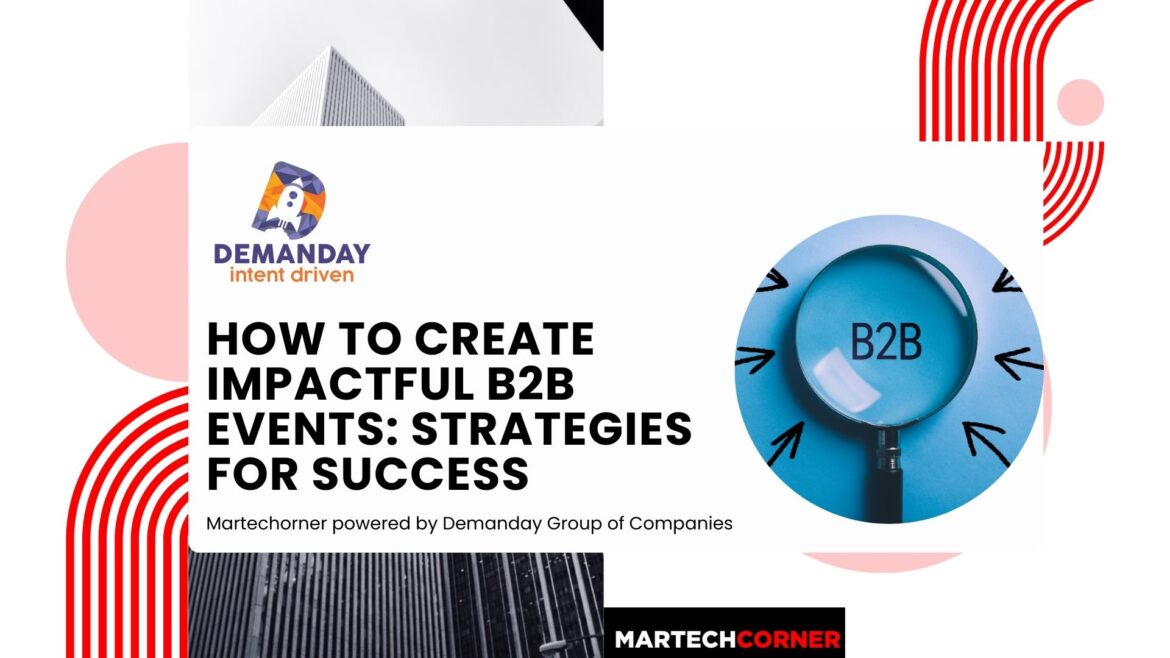Creating successful B2B events can offer a significant return on investment. Research shows that companies earning more than $1 million in revenue see event marketing as a vital part of their growth strategy. Impactful B2B events help businesses connect, share knowledge, and drive sales. These gatherings create opportunities to build relationships, generate leads, and enhance brand visibility. This article explores key strategies to craft memorable and effective B2B events, focusing on planning, content, marketing, technology, and measuring success.
Planning & Goal Setting: Laying the Foundation for Success
Defining Clear Objectives and Target Audience
Setting SMART goals is crucial for steering any B2B event. SMART stands for Specific, Measurable, Achievable, Relevant, and Time-bound. These goals clarify what you aim to achieve and help gauge success. For example:
- Specific: Increase registration by 25%.
- Measurable: Collect 200 leads during the event.
- Achievable: Secure three industry experts as speakers.
- Relevant: Target executives from the technology sector.
- Time-bound: Complete all planning two months before the event.
Budget Allocation and Resource Management
A solid budget lays the groundwork for event success. It should cover all essential aspects:
- Venue rental
- Catering services
- Marketing expenses
- Speaker fees
To maximize budget efficiency, seek sponsorships, negotiate vendor contracts, and explore cost-effective marketing channels.
Choosing the Right Venue and Logistics
Selecting an ideal venue is vital. Consider factors like:
- Location: Ensure it’s easy for attendees to reach.
- Size: Match capacity to expected attendance.
- Accessibility: Accommodate all attendees comfortably.
- Ambiance: Create a welcoming environment.
Logistics also matter—manage registration processes, coordinate catering, and ensure AV equipment runs smoothly.
Content & Programming: Crafting an Engaging Experience
Curating Compelling Content
Top-notch content is key. It should resonate with your audience and offer value. Different formats can enhance engagement:
- Keynote Speeches: Inspire with industry leaders.
- Panel Discussions: Encourage varied perspectives.
- Workshops: Provide hands-on skills.
Designing Interactive Sessions
Incorporating interactive elements keeps attendees engaged. Use:
- Q&A Sessions: Let the audience ask questions directly.
- Polls: Gauge opinions instantly.
- Breakout Sessions: Allow small group discussions.
Successful examples include tech conferences with live polling and breakout brainstorming sessions.
Incorporating Networking Opportunities
Networking is vital for B2B events. Facilitate meaningful connections through:
- Structured Activities: Icebreakers or speed networking.
- Dedicated Spaces: Comfortable lounges or meeting areas.
These efforts encourage attendees to mingle and build relationships.
Marketing & Promotion: Reaching Your Target Audience
Developing a Comprehensive Marketing Strategy
A multi-channel marketing approach is essential. Explore various channels such as:
- Email Marketing: Send personalized invitations.
- Social Media: Share event highlights and updates.
- Paid Advertising: Target specific demographics.
- Public Relations: Generate buzz through media coverage.
Statistics show that events promoted through social media see higher engagement rates.
Creating Engaging Marketing Materials
Effective marketing materials attract attendees. Consider:
- Event Website: A central hub of information.
- Brochures: Highlight key features and benefits.
- Social Media Posts: Use eye-catching visuals.
Each piece should convey the event’s value proposition.
Measuring Marketing Campaign Effectiveness
Track your marketing efforts for continuous improvement. Key metrics to monitor include:
- Website Traffic: Understand visitor behavior.
- Event Registrations: Measure interest levels.
- Social Media Engagement: Assess interaction levels.
Analyzing these data points helps refine future campaigns.
Technology & Engagement: Enhancing the Attendee Experience
Leveraging Event Technology
Adopting event technology can streamline processes and enhance experiences. Use tools like:
- Event Apps: For schedules, updates, and networking.
- Registration Platforms: To simplify sign-ups and payments.
These technologies can also collect valuable data on attendee behavior.
Fostering Engagement Through Interactive Elements
Increase attendee involvement with innovative techniques:
- Gamification: Create challenges or rewards for participation.
- Live Polls: Gather opinions in real-time.
- Q&A Sessions: Facilitate direct interaction with speakers.
These approaches can boost overall satisfaction and engagement.
Post-Event Follow-up and Engagement
Don’t let connections fade after the event. Follow-up is crucial. Consider:
- Thank You Emails: Express gratitude and share highlights.
- Feedback Surveys: Gather insights for improvements.
- Social Media Engagement: Keep the conversation going.
These strategies help maintain relationships and collect valuable feedback.
Measuring Success and ROI: Analyzing Results & Optimizing Future Events
Defining Key Performance Indicators (KPIs)
Establish relevant KPIs to measure success. Key indicators might include:
- Attendance Rate: Percentage of registered attendees.
- Lead Generation: Number of contacts gathered.
- Customer Acquisition Cost: Expense on acquiring new clients.
- Customer Lifetime Value: Long-term value generated from attendees.
Collecting and Analyzing Data
Use various data collection methods:
- Surveys: Get attendee perspectives on their experience.
- Feedback Forms: Evaluate sessions and overall events.
- Analytics Platforms: Use software to track engagement and ROI.
Analyzing this data provides a roadmap for future improvements.
Optimizing Future Events Based on Data
Insights gained from analysis should inform future planning. Use feedback to:
- Identify successful content and speakers.
- Adjust logistical strategies based on attendee preferences.
- Improve marketing tactics by identifying effective channels.
By leveraging data, you can enhance the quality of your events and improve ROI.
Conclusion
Creating impactful B2B events requires careful planning, engaging content, effective marketing, and diligent measurement. Clear objectives guide the event’s direction, while quality content captivates attendees. Consistent follow-up fosters relationships, and data analysis paves the way for continuous improvement. Implement these strategies to ensure your next B2B event stands out and drives meaningful outcomes. Take action now and apply these insights to elevate your event’s success.


